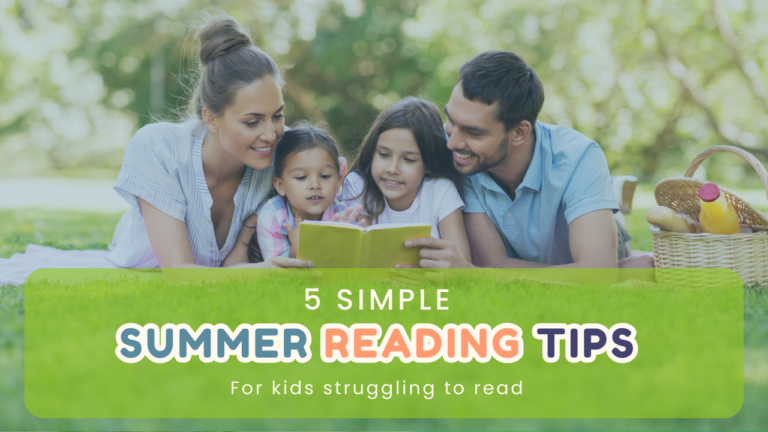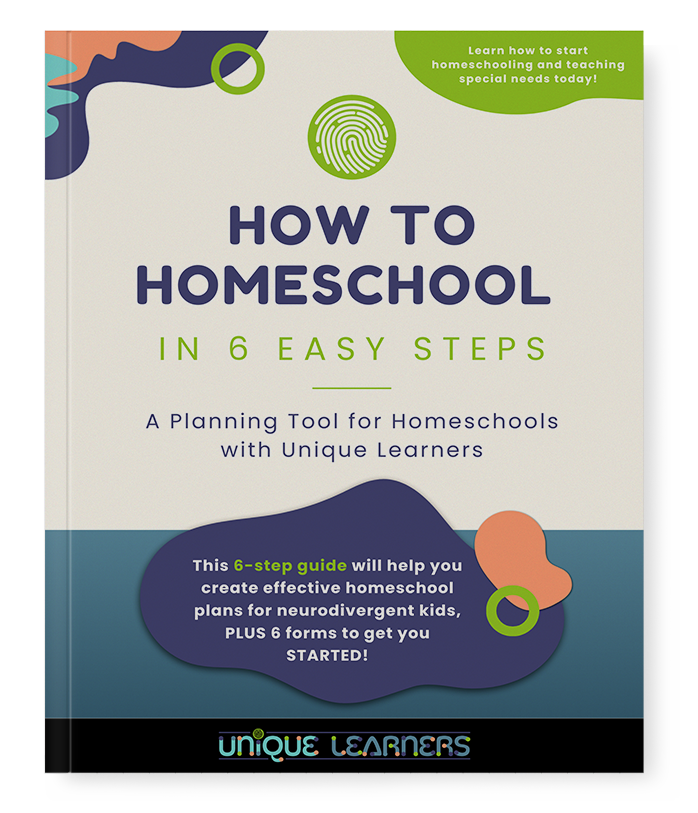Summer reading can be a wonderful escape from a daily homeschool routine and can spark a bit of independence. Homeschool moms want to nurture a love for literature in their children, including those with dyslexia or other special needs. Unfortunately, for struggling readers, reading independently can be a daunting task. Just picking a book can be overwhelming because easy readers may be at a learner’s independent reading level yet lacking the content that bright kids really want. And books that look age appropriate for content are often beyond the reading ability of kids with language-based disabilities. To make summer reading fun and enjoyable for every child, we’ve come up with some exciting book ideas that they won’t want to put down. Whether it’s adventure, mystery, fantasy, or comedy, there’s something for every kind of reader.
The importance of summer reading for struggling readers
Struggling readers can find it hard to do independent reading if they need to work very hard to decode many words. Slow, choppy reading often makes comprehension difficult. Struggling readers tend to regress with breaks longer than a week or two.
Research has shown that strong readers read more words than struggling readers.
So how do we get struggling readers to read more words? We can use a few strategies. First, give kids books at their independent reading level and explain that the point is to read as many books as they can. We use an incentive chart with a relational reward for this challenge! To satisfy the need for content, encourage your struggling reader to follow along with audiobooks. That way the child doesn’t get slowed down in the decoding process. So many more words are seen and heard simultaneously, which is one of the precepts of multisensory instruction.
Summer is a perfect time to do a short-term competition or cooperative attempt with siblings or friends to earn a fun outing reward. This article will give tips for finding books and creating opportunities to make reading feel like an adventure. Your kids will find summer reading something to look forward to each year!
Tip 1. Find books on topics that your kids are interested in.
Ask your children to make a list of 3 topics they would like to know more about. It could be a type of animal, a famous historical person, or a science topic of how something works.
Ask your children to add 3 historical eras they find fascinating. Maybe they like Ancient Egypt, the American Revolution, or Japanese Samurai.
Finally, as your children if they have heard of a book series that sounds fun. Perhaps your reader would enjoy the Magic Tree House series, the Cat Warrior series, Wings of Fire series, or Percy Jackson series.
Make opportunities for your kids to have choices for books. Go to the library to choose a variety of books. Go to garage sales or thrift stores to buy used books that are found treasures.
Tip 2. Set a summer reading goal for each month.
It’s usually best to set individual goals for number of books read. If your child is transitioning from easy readers to beginning chapter books, you may want to count chapters as the goal. Setting a goal gives the reader a target to reach. Set the first goal so that your child can complete it easily. Remember success yields more success. For the next month, nudge the number up by just a few books or chapters.
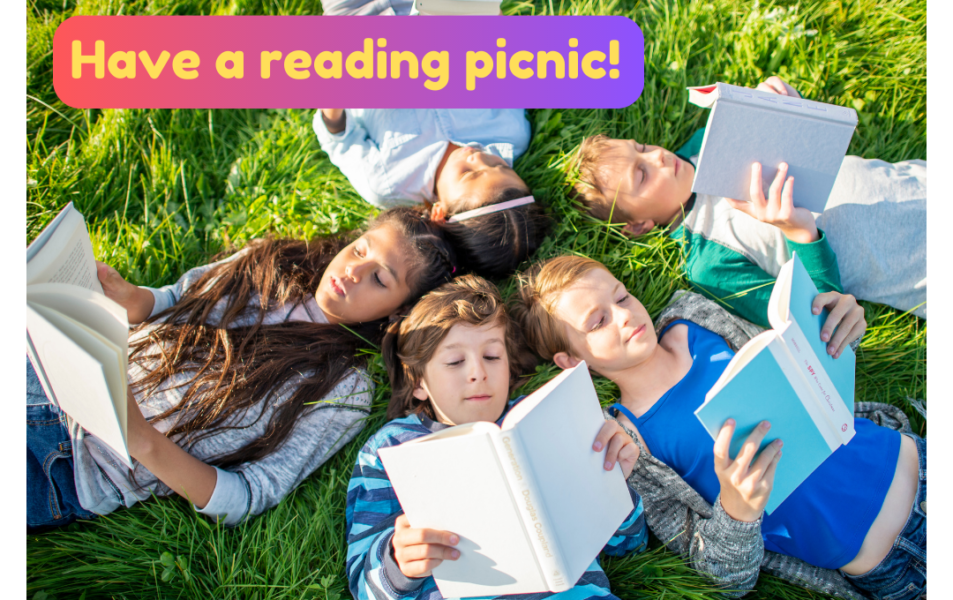
Think about this when setting a goal:
There are usually about 20 work days in a month. That means a goal of 20 books means reading one picture book or chapter each day.
If your child is reading a chapter book with 10 chapters, you may want them to read 2 chapters a day. That would mean the book will be done in 5 days. So realistically, your kiddo could read 4 books, like Magic Tree House in a month.
For teens reading longer, harder novels, typically 1 to 2 books can be accomplished in a month unless they are fast readers or listening to audiobooks. Allow your teen to predict a realistic goal. If the goal is set way too high, suggest a couple of alternative number of chapters or books and negotiate the goal. This is one time when negotiating is appropriate!
Tip 3. Use incentive charts as a progress monitoring tool for summer reading.
An incentive chart is a great tool to keep track of how many books a child has read. We have a set of FREE summer reading incentive charts you can download here! These fun printables will last the whole summer.
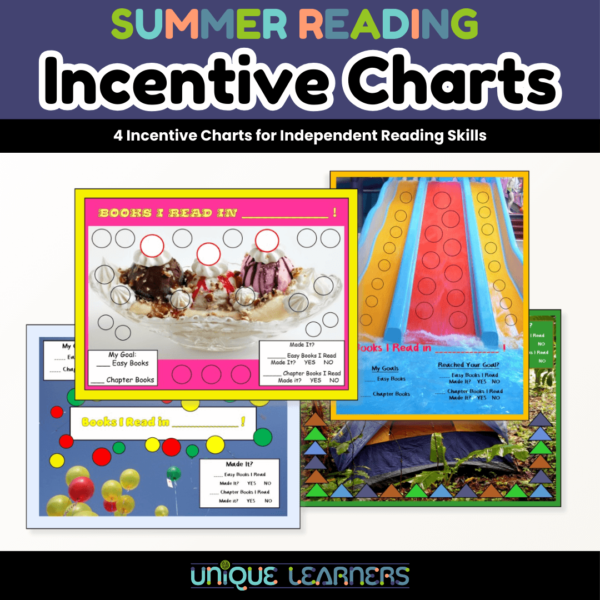
- Set a goal with your reader.
- Have your child mark off a space for each book or chapter read.
- Make a list of the books on the back of the incentive chart.
- Write the total number of books read throughout the month.
- If the goal was reached, choose one of the exciting reward suggestions provided.
Tip 4. Use rewards for the most difficult skills.
Most kids don’t need to receive tangible rewards for every little thing. Activity rewards that help you focus on your child’s success are the most powerful. Planning incentive rewards is a form of wages for hard work when kids accomplish a difficult task.
An incentive chart alone is one form of reward. Verbal and specific praise is the easiest motivator while a goal is being worked on. One way to communicate specific praise is: “Wow! You read 3 chapters today. You made excellent progress toward your monthly reading goal!”
The set of FREE summer reading incentive charts include suggestions for rewards, like having a slip-and-slide afternoon or making banana splits. They are fun activities that involve the whole family!
Tip 5: Do a cooperative group process to reach a goal.
If you have a child who thrives on competition and works best on a team, this fun tip is most likely to fit your homeschool. Set a theme that is interesting to your child. The theme could be trains, butterflies, flip flops, baseballs, snow cones, etc.
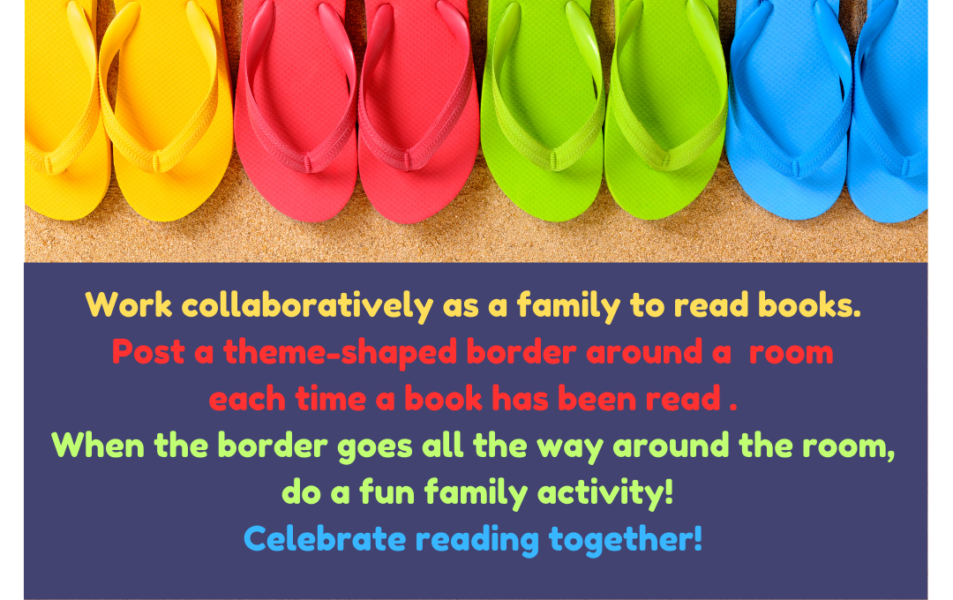
- Rather than set a numeric goal, decide on a space to make a room border or a door to fill.
- The whole family, including parents, can participate to work on the group project. You may also include read-aloud books that the family enjoys together.
- Order or make shape cut-outs to represent each book read. You can color code the shapes by family members if you prefer.
- As each book is completed, write the title of the book (or chapter number) and the person’s name.
- Tape the shape around the top of the wall in the room or place it randomly on the door.
- Continue to read books and add shapes to the line of shapes until they have gone all the way around the room or filled up the door space.
- Then the whole family can do an activity, like going to a big model train display, go to a trampoline park, go camping, make snow cones, etc.
This can be a fun summer of plenty of reading and working together to help struggling readers learn to love reading! We hope you will build treasured reading memories with your children this summer. If you come across a great book that your struggling reader absolutely loved, please share it with us!
AND, Remember, collaboration with support groups can also offer valuable insights into your child’s educational journey. We invite you to join our private Facebook Group: Homeschool Help for Special Needs for on-going support for learning, behavior, planning, teaching, and pretty much all things involving homeschooling kids with special needs.
Happy Reading!
